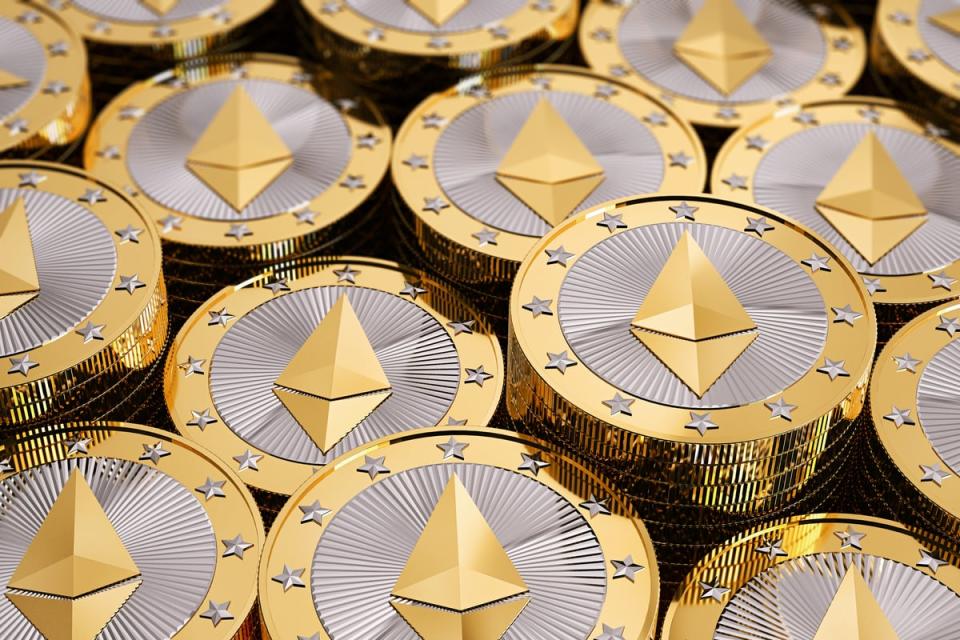If you’ve got $1,000 to invest that you don’t need for anything else in the short or medium term, and are looking at the cryptocurrency market, there are literally thousands of options. However, based on a combination of fundamentals and recent developments, Ethereum (CRYPTO: ETH) stands out from the crowd.
There are several compelling reasons why the world’s second-most valuable cryptocurrency is deserving of your $1,000, but three stand out above the rest: regulatory acceptance, its deflationary nature, and its dominance in decentralized finance (DeFi).


Regulatory acceptance looms
The Securities and Exchange Commission (SEC) recently approved applications from several firms looking to launch the first spot Ethereum exchange-traded funds (ETFs). This paves the way for these firms to submit their S-1 forms, which would then allow the ETFs to go live. These ETFs are expected to become available for trading sometime in late June or July.
Having spot ETFs is a game changer for democratizing access to Ethereum. It will mean that investors can purchase Ethereum through a traditional brokerage account, eliminating the need to navigate often complex and intimidating crypto exchanges. This ease of access will likely attract a broader range of investors who have been hesitant to enter the crypto market.
The most significant impact, however, is the potential influx of institutional investors. Until now, many institutional investors have been wary of directly investing in cryptocurrencies, including Ethereum, primarily due to regulatory uncertainties and the lack of a straightforward investment vehicle.
The approval of spot Ethereum ETFs removes these barriers, allowing institutions with deep pockets to participate in the market. This probable influx of institutional capital could put significant upward pressure on Ethereum’s price, similar to what we saw with Bitcoin (CRYPTO: BTC) following approval of spot Bitcoin ETFs early this year. In the months after the spot Bitcoin ETFs launched, they were buying Bitcoin at 10 times the daily production rate, driving its price to a new all-time high. If things unfold in a similar fashion, Ethereum could experience a similarly explosive boost.
Deflationary dynamics
With a new set of buyers entering the market, Ethereum’s price could benefit even more than Bitcoin’s thanks to a crucial upgrade the blockchain received in 2021: the London hard fork. This upgrade introduced a mechanism that makes Ethereum deflationary by burning a portion of the transaction fees. Essentially, every time a transaction is processed, a small amount of ether is permanently removed from circulation.
Unlike Bitcoin, which has a fixed supply cap of 21 million coins, Ethereum does not have a supply maximum. However, the deflationary mechanism introduced by the London hard fork means that, under the right conditions, more ether is burned than is created, reducing the overall supply. This burning mechanism is particularly effective during periods of high network activity, as more transactions result in more ether being burned.
Bitcoin is often lauded for its low inflation rate, but it is worth noting that Ethereum’s inflation rate is currently lower. Since the London hard fork went live, Ethereum’s inflation rate is approximately -0.18%, meaning that its supply is actually decreasing.
The pending launch of Ethereum ETFs could significantly alter the supply and demand dynamics, potentially sending its price even higher. Increased demand from ETF purchases, coupled with the deflationary effect of the burn mechanism, creates a perfect storm for price appreciation.
The DeFi champion
If the pending launch of ETFs and the deflationary nature of Ethereum are not enough to persuade you to invest, consider Ethereum’s undisputed leadership in the DeFi space. More than 60% of the DeFi market is built on the Ethereum blockchain, which is not just a statistic but a testament to its foundational role in the future of finance.
DeFi represents a revolutionary shift, transforming how financial services are delivered by eliminating the need for traditional intermediaries. Instead of relying on banks or other financial institutions, DeFi platforms offer services such as lending, borrowing, and trading directly through blockchain technology. Ethereum’s robust smart-contract capabilities make it the perfect platform for these applications, enabling secure, transparent, and automated transactions without the need for a trusted third party.
The significance of Ethereum’s dominance in the DeFi space cannot be overstated. As more DeFi applications are built on Ethereum, the network’s utility and value increase. This growing ecosystem creates a positive feedback loop: The more users and developers who participate, the more valuable and indispensable the Ethereum network becomes. This network effect not only enhances Ethereum’s current value but also ensures its long-term potential as the backbone of decentralized finance. As DeFi continues to expand and integrate with traditional financial systems, Ethereum’s pivotal role will likely drive substantial and sustained growth.
Should you invest $1,000 in Ethereum right now?
Before you buy stock in Ethereum, consider this:
The Motley Fool Stock Advisor analyst team just identified what they believe are the 10 best stocks for investors to buy now… and Ethereum wasn’t one of them. The 10 stocks that made the cut could produce monster returns in the coming years.
Consider when Nvidia made this list on April 15, 2005… if you invested $1,000 at the time of our recommendation, you’d have $741,362!*
Stock Advisor provides investors with an easy-to-follow blueprint for success, including guidance on building a portfolio, regular updates from analysts, and two new stock picks each month. The Stock Advisor service has more than quadrupled the return of S&P 500 since 2002*.
*Stock Advisor returns as of June 3, 2024
RJ Fulton has positions in Bitcoin and Ethereum. The Motley Fool has positions in and recommends Bitcoin and Ethereum. The Motley Fool has a disclosure policy.
The Ultimate Cryptocurrency to Buy With $1,000 in June was originally published by The Motley Fool










